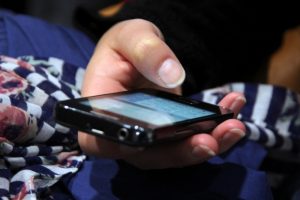Ride-sharing services like Uber and Lyft have sailed in like a white horse, ready to save us all from the scourge of drunk driving injuries and deaths. At least, that’s the narrative these services are selling. Proof that it’s actually working, however, is conflicting. 
Take, for example, the recent study published in the American Journal of Epidemiology suggests these serves have had little to on impact on the national overall rate of drunk driving accidents, injuries or deaths. Drunk driving fatalities have hung steadily at around 10,000 for many years, though they have dipped significantly since the 1970s and 1980s.
Uber broke out onto the scene in 2009 and has largely been popular in bigger cities, such as Boston. But unfortunately, as the study authors discovered, the rates of drunk driving in those locations hasn’t gone down. The reason, researchers say, has to do with the fact those who are impaired aren’t willing to pay for the expense of a ride.
Researchers analyzed traffic deaths in the 100 most-populated metro areas in the country between 2009 and 2014. They paid special attention to patterns during holidays and weekends, when Boston drunk driving accidents and injuries are known to be more likely. They controlled for differences in state laws that might have an impact on road safety (i.e., marijuana legislation, higher alcohol/ beer taxes, bans on texting and driving). They also factored in the accessibility of traditional taxi services in a given area.
What they found: There was no correlation – positive or negative – with the presence of Uber and other ride-sharing services and reduced rates of drunk driving.
Representatives from Uber, however, have insisted this is inaccurate. For example, look at the recent study conducted at Temple University that revealed a 4 percent dip in drunk driving rates in California cities where ride-sharing services were popular. Certainly, it’s worth considering, though it should be noted that the study didn’t analyze cities in any other state or factor other possible reasons that might have contributed to the decline.
Uber leaders also point to one of the company’s own surveys, which was conducted with assistance from national drunk driving advocacy group Mothers Against Drunk Driving (MADD). In that study, 78 percent of respondents answered that they – and their friends – are less likely to drive a vehicle drunk when they have access to a ride-sharing service like Uber or Lyft.
A spokesperson for Uber told Motherboard that trips during peak drunk driving times soar, with nearly 8 in 10 respondents saying they have personally been helped home by the service in those situations.
But one of the biggest problems during these peak times is price surging. That is, the cost of an Uber ride increases during these times, which means those who might most need a sober driver are less likely to seek one out via these services.
It’s estimated there are more than 110 million drunk driving “incidents” every year. That includes cases in which people are pulled over, crash or are hurt or killed.
The bottom line is that while certainly services like this provide a viable option, it’s one that isn’t being taken near enough. Many communities do however provide free rides on certain nights, and it’s something of which more drivers should avail themselves. The cost of not doing so is far too high.
If you or someone you love has been injured a Boston drunk driving accident, call for a free and confidential appointment at (617) 777-7777.
Additional Resources:
Uber and Metropolitan Traffic Fatalities in the United States, July 22, 2016, American Journal of Epidemiology
More Blog Entries:
Campaign to Bring Back Drink Specials to Massachusetts Underway, July 24, 2016, Boston Drunk Driving Accident Lawyer Blog
 Boston Drunk Driving Accident Lawyer Blog
Boston Drunk Driving Accident Lawyer Blog

